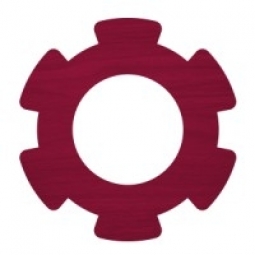Customer Company Size
Large Corporate
Region
- America
Country
- United States
Product
- FleetFocus
- KeyValet
Tech Stack
- Automated Motor Pool system
- Vehicle Data Collector (VDC)
Implementation Scale
- Enterprise-wide Deployment
Impact Metrics
- Cost Savings
- Productivity Improvements
- Customer Satisfaction
Technology Category
- Functional Applications - Fleet Management Systems (FMS)
- Functional Applications - Enterprise Resource Planning Systems (ERP)
Applicable Industries
- Education
Applicable Functions
- Logistics & Transportation
- Facility Management
Use Cases
- Fleet Management
- Automated Disease Diagnosis
Services
- System Integration
- Software Design & Engineering Services
About The Customer
The University of Colorado Boulder (UC Boulder) is a public research university located in Boulder, Colorado. It is the flagship university of the University of Colorado system and was founded five months before Colorado was admitted to the Union in 1876. The university has more than 30,000 undergraduate and graduate students. UC Boulder is a member of the Association of American Universities, a selective group of major research universities in North America, and is classified as an R1 University, meaning that it engages in a very high level of research activity. As of 2017, the university has produced a total of 12 Nobel laureates, nine MacArthur Fellows, and 20 astronauts.
The Challenge
The University of Colorado (UC Boulder) operates a motor pool as part of its overall fleet structure. The motor pool serves the many employees of the University who rely on the pool vehicles for anything from short trips around the university to longer term rentals for research trips. However, motor pool vehicles were only available for customers to pick up and drop off Monday through Friday between 8am and 5pm, which was inconvenient for many people who depend on the motor pool service. Customers had to make a request via fax or email which was then processed manually by a Transportation Services staff member. The customer also recorded an odometer reading which was manually input into FleetFocus by the Transportation Services staff member. UC Boulder wanted a solution that would reduce manual entry, improve accuracy and expand service.
The Solution
UC Boulder sought a system that would increase motor pool availability to university staff through an automated system that provides secure 24-7 availability AND integrates fully with the University’s Fleet Management Software Solution – FleetFocus. After a competitive selection process, they selected AssetWorks KeyValet. The KeyValet system allows for 24x7 availability of motor pool vehicles. Reservations can be made at any time using the online FleetFocus Motor Pool reservations functionality. Upon reservation, a confirmation email is sent to the customer with a code that unlocks the specific vehicle at the lot using KeyValet’s secure dispatch procedures. The entire process can be done without additional visits to the Transportation Services office, which saves the customer a tremendous amount of time. The odometer reading is automatically transmitted wirelessly in real-time to the KeyValet box and directly into FleetFocus through the Vehicle Data Collector (VDC) which saves time through the reduction of manual recording and entry, as well as improves accuracy through direct communication between the vehicle and the Fleet Management System.
Operational Impact
Quantitative Benefit

Case Study missing?
Start adding your own!
Register with your work email and create a new case study profile for your business.
Related Case Studies.

Case Study
Revolutionizing Medical Training in India: GSL Smart Lab and the LAP Mentor
The GSL SMART Lab, a collective effort of the GSL College of Medicine and the GSL College of Nursing and Health Science, was facing a challenge in providing superior training to healthcare professionals. As clinical medicine was becoming more focused on patient safety and quality of care, the need for medical simulation to bridge the educational gap between the classroom and the clinical environment was becoming increasingly apparent. Dr. Sandeep Ganni, the director of the GSL SMART Lab, envisioned a world-class surgical and medical training center where physicians and healthcare professionals could learn skills through simulation training. He was looking for different simulators for different specialties to provide both basic and advanced simulation training. For laparoscopic surgery, he was interested in a high fidelity simulator that could provide basic surgical and suturing skills training for international accreditation as well as specific hands-on training in complex laparoscopic procedures for practicing physicians in India.

Case Study
IoT platform Enables Safety Solutions for U.S. School Districts
Designed to alert drivers when schoolchildren are present, especially in low-visibility conditions, school-zone flasher signals are typically updated manually at each school. The switching is based on the school calendar and manually changed when an unexpected early dismissal occurs, as in the case of a weather-event altering the normal schedule. The process to reprogram the flashers requires a significant effort by school district personnel to implement due to the large number of warning flashers installed across an entire school district.

Case Study
Implementing Robotic Surgery Training Simulator for Enhanced Surgical Proficiency
Fundacio Puigvert, a leading European medical center specializing in Urology, Nephrology, and Andrology, faced a significant challenge in training its surgical residents. The institution recognized the need for a more standardized and comprehensive training curriculum, particularly in the area of robotic surgery. The challenge was underscored by two independent studies showing that less than 5% of residents in Italian and German residency programs could perform major or complex procedures by the end of their residency. The institution sought to establish a virtual reality simulation lab that would include endourological, laparoscopic, and robotic platforms. However, they needed a simulator that could replicate both the hardware and software of the robotic Da Vinci console used in the operating room, without being connected to the actual physical console. They also required a system that could provide both basic and advanced simulation training, and a metrics system to assess the proficiency of the trainees before they performed surgical procedures in the operating theater.

Case Study
Edinburgh Napier University streamlines long-distance learning with Cisco WebEX
• Geographically dispersed campus made in-person meetings costly and inconvenient.• Distance-learning programs in Malaysia, India, and China required dependable, user-friendly online tools to maximize interaction in collaborative workspaces.• Virtual learning environment required a separate sign-in process, resulting in a significant administrative burden for IT staff and limited adoption of collaboration technology.

Case Study
8x increased productivity with VKS
Before VKS, a teacher would spend a lot of time showing a group of 22 students how to build a set of stairs within a semester of 120 hours. Along with not leaving the teacher much time to provide one-on-one support for each student to properly learn carpentry, it also left a considerable amount of room for error. Key information would be misinterpreted or lost as the class was taught in the typical show-and-tell way.

Case Study
Scalable IoT Empowering GreenFlex's Sustainable Growth
GreenFlex, a company that supports sustainable development, decarbonization, and energy efficiency, faced several challenges in its quest to expand its business. The company needed to deploy a robust and sustainable IoT technology to support its growth. It was crucial for them to monitor and control devices at customer sites in a safe and reliable manner. They also needed to integrate devices across a range of communication protocols and gather and act on data to meet efficiency targets. GreenFlex had previously built IoT capabilities into its digital platform, GreenFlexIQ, to monitor and manage customer sites remotely. However, they soon realized that they needed a new platform to support their ambitions. They needed a platform that could scale to connect more devices for production management and make it easier for the operations team to manage devices in the field.







